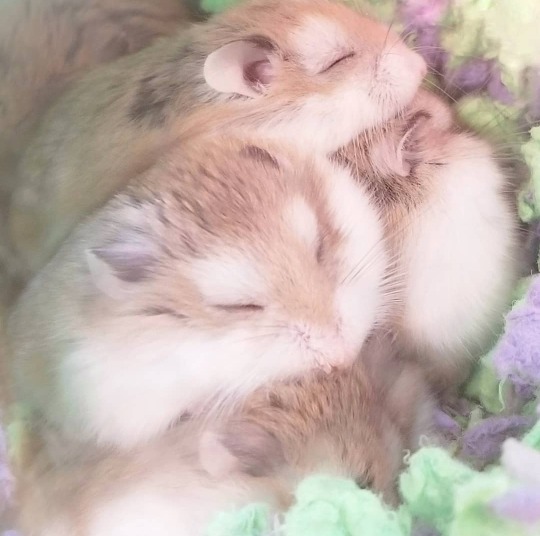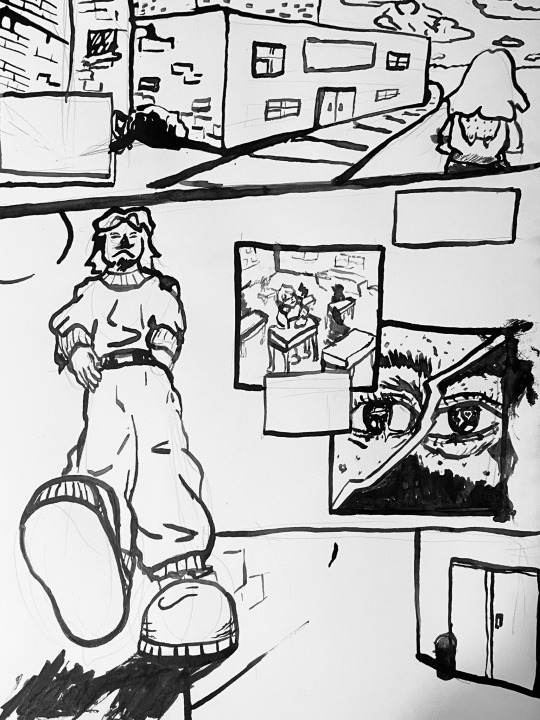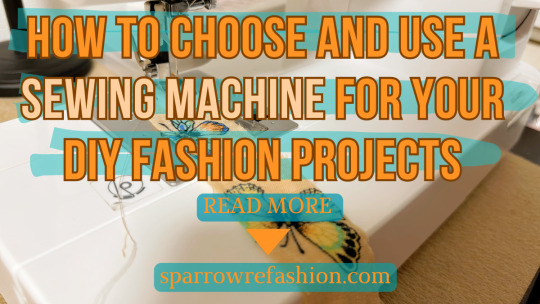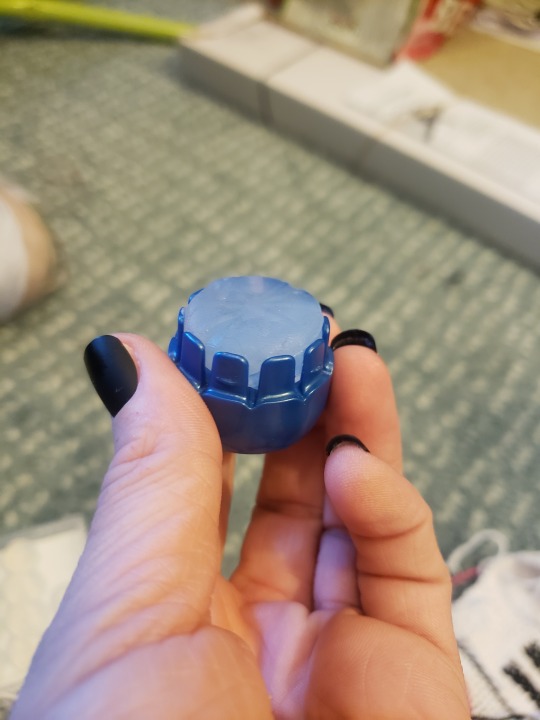#quilting tips
Explore tagged Tumblr posts
Note
Do you have any tips about how to work on quilts? I’m just starting out and I’m in awe at how quickly you can make quilts and how beautiful they turn out.
Hey! Thanks, and welcome to quilting, it's a lot of fun! So, these tips are going to be a bit haphazard and out of order, because that's how I operate lol - do iron your fabric before you cut it - do iron your seams before sewing rows together, and before assembling your quilt sandwich - you can use the backing as the binding for your quilts and then you don't have to try to wrangle binding strips, it's all attached and easy to do - this one is going to sound kinda silly, but use fabric you like whenever you can. Even a super simple patchwork can be awesome if you use fabric you like, and the most complex intricate pattern can be terrible if you don't like the fabrics - sewing clips are the BEST. I think the brand name is clover wonder clips, but the generic is so much cheaper and nearly as good. You'll break the generic versions occasionally but they come like 100 for less than 10 bucks so you can throw away the broken ones and the rest still work. They are just so much faster than using pins - a rotary cutter, quilting ruler, and cutting mat make quilting so much easier - your seam allowance does not have to be 1/4". It can be whatever you want it to be, as long as you either account for it while making your pattern or use a pattern where it doesn't matter as long as it's consistent (like a simple patchwork). Do make sure you seam allowance is large enough that the fabric won't fray apart around it - never buy batting full price at Joanns, it goes on sale regularly or you can almost always get like a 40% off one full price item coupon when it's not on sale - when you are cutting fabric on a rotary mat, you can cut more than one layer of fabric at a time (might be obvious, but I did not know that at first lol) - shop around online for replacement rotary cutter blades, the prices vary wildly and seem to have no rhyme or reason, sometimes it's cheaper to get a two pack of blades than to buy just one? Most of all, make patterns that you want to make. Almost all the quilt patterns I make (except my improv scrap quilts) are really, really basic quilt patterns, because that's what I like making. I like keeping the pattern super simple and letting the fabric be the star, because my favorite part is arranging the fabrics like a puzzle. I have a quilt friend who makes really really intricate, beautiful paper pieced quilts I 100% do not have the patience for, but that's what she likes making and she's great at it. Enjoy what you're making and you'll find the parts of quilting you like best over time :)
#ask away!#hellomissmedia#quilting tips#I don't know like a *lot* of other quilters well enough to know how long quilts take them#but I do suspect I am an outlier time-wise?#but like. you know how sometimes your parents might have like a special interest or something they know a lot about#and you learn it as a kid without knowing it's perhaps a weird thing for a kid to know?#my mom's interests were (among other things) marketing and the optimization of systems#so like. I grew up habitually streamlining processes as like...just another step of doing anything?#which I only learned relatively recently is not a thing everyone does all the time#but yeah I suspect that affects how long it takes me to make a quilt lol
47 notes
·
View notes
Text
7 notes
·
View notes
Text
Hand quilting straight lines tips
7 notes
·
View notes
Text

Sewing Hacks - Dollar Store Tricks
by Dancing Stitches
Just an FYI Dancing Stitches is in Ontario, Canada so what's available in her Dollar Store may not be available in my area but I love all her ideas so these are things I will look for.
youtube
#crafts#gifts#decor#sewing#quilting#briar rose quilts#bedding#shopping#quilters of tumblr#dollar store#dollar tree#sewing hacks#quilting hacks#sewing tips#quilting tips#Dancing Stitches#sewing tricks#quilting tricks#quilts#fabric art#textile art#embroidery#fiber art#Youtube
1 note
·
View note
Text
So I've been struggling with chain piecing my latest project. Every time I'd end up with a knot of thread and I was losing my mind. Turns out I wasn't keeping enough tension between pieces. Was kind of venting to the husband and he reminded me that I was a beginner and it wasn't possible to just know everything.
So, for all you people just getting into crafting like me, here's a message from my husband. Be kind to yourself as your learning. Learning something new is hard enough without you kicking yourself over every mistake.
#quilters of tumblr#quilting#fiber crafts#Discovering there's a fine line between too much and too little tension.#Thinking of doing tutorial/tips Tuesdays as I'm amazed at how much I could learn
16 notes
·
View notes
Text
here’s my last canonical veilguard thought - Varric and Solas’s fates are explicitly tied in my mind. Narrative and artistic foils too. Varric has to try and Solas must do, it’s their great power and undoing.
ANYWAY, on a happier note as I put myself back in jail, nothing changes here with me. Varric will always be looking for a way home to family, a great story he could never put down. His cobbled together family and whatever is left of Kirkwall.
#datv speculation#.bullshit ( ooc )#I don’t know man it’s#It is a day today and regardless of what actually happens I’m pulling him out of the mud dusting him off and sitting him somewhere warm#And dry and not on a slope or overly humid with a shitty little quilt and tea good night everyone tip your waitstaff
7 notes
·
View notes
Text

#hamsters#comfy#kawaii#photography#my photography#hampter......#fun fact on this day my friend and i decided to open my sunroof which i promptly left open for an entire week and didnt notice until it had#already been raining for 2 days straight.#now my car has recovered entirely from the water damage its like it never happened but that. THAT. was a torment that lasted so so long#everytime i drove to my uni's bi weekly mandated covid test (2020 thingz) i would have a wet spot unless i laid my#'emergency trapped in snow' quilt on the seat beforehand#btw i cured it via copious moisture sucking bags (not the powder ones those spilt twice on me and were a pain in the ass to get out and#didnt help) and driving to the nearest sketchy carwash to vacuum out the water daily for a few weeks#and then promptly moving to sunny florida where the sun dried the rest. pro tip: car got wet? just move to florida ez#i think of my sad wet pants walkig thru kroger everytime i listen to nickelbacks 'far away' which was playing when i first drove in it afte#2020
67 notes
·
View notes
Text
WIP/rough draft of the first page of The Extraordinarily Ordinary Adventures of Preston Lindsey fan comic

I’m practicing using my feather quill bc that shit makes such nice lines etc so this probably isn’t the final version.
Feather quill >>>> any other pen/inking tool imo
#me when ink costs 7 dollars but it can last me way over a year#and the feather is free and eco friendly#a four pack of my favorite plastic pens are more than that and don’t last as long#and the great thing about a feather quilt is that when it breaks all I have to do is chop off the end and re carve it#unlike the goddamn metal foundation pens which are expensive af and so easy for me to break#all this feather needs is to be soaked in warm water for a bit and then it’s good for use#another great thing: I can always just get another feather from outside if it gets too short#another great thing: I don’t have to change pens for changing size#more great shit: IT CAN HIT THE BOTTOM OF YOUR INK BOTTLE WITHOUT BECOMING DEFORMED LIKE THOSE DAMN METAL FOUNTAIN PEN TIPS DO#more great shit: I can tape down the ink bottle to the table so it doesn’t spill and can last even longer#only negative thing: it can sometimes get less opaque when I don’t want it too and sort of can have a mind of it’s own#but just like water color it’s something you simply learn to work with and appreciate#my art#traditional art#feather quill#inking#ink#fan comic#fountain pen#but betta
2 notes
·
View notes
Text
How to Choose and Use a Sewing Machine for Your DIY Fashion Projects | sewing machine for beginners
In this post, you will discover the best sewing machines for beginners and advanced sewist and how to use them effectively. Do you want to create your own garments, accessories, home decor, and more with sewing? Do you want to learn how to choose and use a sewing machine that can help you achieve your sewing goals? If so, you are in the right place. In this post, I will show you everything you…

View On WordPress
#beginner sewing machine#Beginners#Brother#denim#diy fashion#Experts#fabric#Janome#Juki#Quilting#sewing#sewing machine#sewing machine for beginners#Sewing Machines#sewing projects#sewing tips#sewing tutorial
3 notes
·
View notes
Text
These are mostly patchwork/quilting related, but some apply to sewing more generally
Get to grips with all the controls on your machine early on so you're comfortable adjusting them for various projects down the line. It does make a difference and will make your life easier.
Machine sewing is definitely much faster and less labour intensive - but you must consider the capacity of your machine when planning. Think about your materials and whether your machine can cope with them, lest you end up for instance, having to hand sew your intricate quilting design and it takes you days instead of a few hours.
Use fabric scraps from your project to test tension, stitch length etc on the fabric you're using before you go for it on the actual piece. For quilting test the design/style on a scrap of your quilt sandwich, especially for free motion quilting.
If you find you like a slightly "informal", warped look to a patchwork quilt you can wash after it's finished to take advantage of the warp during washing and give it a crinkly, imperfect feel. This is better for quilts which are to actually be used and will be washed regularly e.g. baby quilts where texture is as important as aesthetic and it has to be washable.
If you're at all concerned about colorfastness always wash before making and wash your binding & backing fabric too.
The machine looks/sounds dangerous but the rotary cutter, if you use one, is much easier to hurt yourself with. Measure thrice, cut once, and keep thy fingers out of the way of the blade. A metal ruler with a handle on top is an excellent tool for keeping your fingers well clear and getting nice, clean, straight cuts. Jabbing yourself with a pin is kind of inevitable.
You don't need tons of gadgets, start with the basics and see where there are gaps before you invest in things.
If in doubt, make a toile (a practice mock up using cheap/scrap fabric). Even if not in doubt, making a toile is immensely helpful for getting your head round a pattern and finding/figuring out unforeseen complications.
Make the most of the communities around the type of sewing you do - there's so much expertise to draw on whether locally or online. You can ask questions, commiserate, and if you want to, show off what you've made to people who will recognise your effort, skill and progress.
It's as creative a pursuit as writing or music or sketching and the creativity advice that gets repeated for those also applies. Make what makes you happy and excited. Whatever that is. You don't have to slog through projects that feel like a chore (unless you're into delayed gratification, you do you).
You will have a fabric stash and you will need somewhere to put it.
Things I wish I had read in "beginner" sewing tutorials/people had told me before I started getting into sewing
You have to hem *everything* eventually. Hemming isn't optional. (If you don't hem your cloth, it will start to fray. There are exceptions to this, like felt, but most cloth will.)
The type of cloth you choose for your project matters very much. Your clothing won't "fall right" if it's not the kind of stretchy/heavy/stiff as the one the tutorial assumes you will use.
Some types of cloth are very chill about fraying, some are very much not. Linen doesn't really give a fuck as long as you don't, like, throw it into the washing machine unhemmed (see below), whereas brocade yearns for entropy so, so much.
On that note: if you get new cloth: 1. hem its borders (or use a ripple stitch) 2. throw it in the washing machine on the setting that you plan to wash it going forward 3. iron it. You'll regret it, if you don't do it. If you don't hem, it'll thread. If you don't wash beforehand, the finished piece might warp in the first wash. If you don't iron it, it won't be nice and flat and all of your measuring and sewing will be off.
Sewing's first virtue is diligence, followed closely by patience. Measure three times before cutting. Check the symmetry every once in a while. If you can't concentrate anymore, stop. Yes, even if you're almost done.
The order in which you sew your garment's parts matters very much. Stick to the plan, but think ahead.
You'll probably be fine if you sew something on wrong - you can undo it with a seam ripper (get a seam ripper, they're cheap!)
You can use chalk to draw and write on the cloth.
Pick something made out of rectangles for your first project.
I recommend making something out of linen as a beginner project. It's nearly indestructible, barely threads and folds very neatly.
Collars are going to suck.
The sewing machine can't hurt you (probably). There is a guard for a reason and while the needle is very scary at first, if you do it right, your hands will be away from it at least 5 cm at any given time. Also the spoils of learning machine sewing are not to be underestimated. You will be SO fast.
I believe that's all - feel free to add unto it.
#sewing#crafting#sewing beginner#quilting#sewing tips#skillbuilder quilts are nasty theyre for perverts who have long term goals#in hindsight the adhd should have been obvious
38K notes
·
View notes
Text
3 notes
·
View notes
Text

FREEZER PAPER MAGIC: 5 SEWING HACKS EVERY CRAFTER NEEDS TO KNOW! by Just Get it Done Quilts https://youtu.be/5hakqZnKWnY?si=eUxc0cjRAGxXRQ-O
#crafts#gifts#decor#sewing#quilting#briar rose quilts#bedding#shopping#quilters of tumblr#freezer paper#quilts#quilting tips#sewing tips#crafting tips#just get it done quilts#karen brown
1 note
·
View note
Text
30 Inspiring Sewing Projects to Try (And How to Learn Sewing Like a Pro!)
Discover Creative Projects, Practical Tips, and the Joy of Sewing for Every Skill Level! Get Inspired: 30 Creative Sewing Projects You Can Start Today! Are you looking to embark on your next creative adventure? Whether you’re a sewing newbie or a seasoned stitcher, the world of sewing is filled with endless possibilities to bring your imagination to life. In this article, we’ve rounded up 30…
#advanced sewing projects#apple#beginner sewing tips#beginner-friendly sewing#crafting hobbies#creative fabric crafts#creative sewing projects#decorative sewing#diy#DIY sewing crafts#eco-friendly sewing#fabric crafts#fashion sewing#gadget lovers#gear#handmade sewing ideas#home sewing projects#how to learn sewing#how to upcycle with sewing#huawei#ipad#laptop#practical sewing ideas#quick sewing projects#quilting#quilting ideas#seasonal sewing projects#sewing#sewing accessories#sewing blogs
0 notes
Text
I have been using silicone ear plugs as thread conditioner for about a year and at this point I can't tell which of my little containers are thread magic and which ones have been refilled with earplugs. Highly recommend this sewing hack and I'm generally not into that sort of thing.
Quick Tips: Thread Conditioner
I had a theory and it checked out.
Historically, people have been running sewing thread through beeswax since many years ago. Waxing thread before hand sewing stops it from twisting and tangling as easily and just generally makes things easier. I talk about waxing thread in the old Reasons You Hate Hand Sewing post.
The main reason why waxing your thread might be bad is that the wax comes off on the fabric, just a bit, and if you hit it with an iron it will fuse the wax into the fabric forever.
To combat this, there’s thread conditioner. You run the thread through the conditioner and it gets some of the conditioner on the thread and it acts like the wax does, but without the problems of wax. There is Thread Magic and you can buy another called Thread Heaven. Both of these are very mystical about what they contain on their websites. They use words like “inert” and “non-toxic” and “non-staining” but they don’t tell you WHAT they are.
As y’all know, I’m not ready to just accept that something is mysterious and corporate secrets. I want to know what it is. I’ve done great research and I have learned many things.

This is Thread Magic. A tub of Thread Magic costs $10.

This is what the box of Thread Magic looks like when it’s opened. Mine’s been used a little bit, but that doesn’t change how it looks too much, except that it’s got some extra lint going through the putty.

This is a 8-pair pack of silicone putty ear plugs that I got at Target for $4.69.

This is what it looks like when you put two of them in the Thread Magic box.
Folks, I’ve done the testing, I have the facts, and Thread Magic and two silicone putty ear plugs operate exactly the same when you put them on some thread.
Now all you need is to go find a little jar.
#hand sewing#thread conditioner#thread magic#thread heaven#sewing hacks#quick tips#epp#english paper piecing#hand quilting
283 notes
·
View notes
Text
I've been gone for a couple of weeks, but I wanted to share this as more of a life tip then the normal quilting tips. A tip that more or less boils down to: you got to put in the work, and it is okay to acknowledge both where you are now and the journey to come.
Story is a little long, but I have a point I promise.
Roughly 9 months ago I agreed to run a marathon with my husband, his two brothers, and my father-in-law. Now I was NOT a runner when I started. I was actually rather out of shape and chubby. Now my amazing FIL who knew what he was doing gave my husband and I a training regimen that started with a couch to 5k (3.1 miles) training plan and then built on that foundation for the marathon training.
Day 1 was 1 minute jogging followed by 1.5 minutes walking for a total of 20 minutes. So I jogged for 8 minutes total on day 1. Now I wasn't so out of shape that I couldn't do that, but it wasn't exactly a breeze either. "How am I ever going to run a marathon (26.2 miles)?" I wanted to quit before I'd ever really begun, but pride, spite, and the fact that I would have to pay my FIL $80 if I failed fueled me to keep to find the answer, which was (unfortunately) keep running.
I progressed from 1-minute jogs to 20-minute jogs, 20-minute jogs to 3 mile jogs, to 5, 8, 16, 20 mile jogs! Finally, I jogged/walked 26.2 miles for 6 hours and 10 minutes to cross that finish line.
Y'all there were so many days that I woke up and thought "I hate running. I don't want to do this. This is stupid." I still showed up, though. I put in the work, and I finished! Was every run fantastic? No! I had some truly terrible training days, but I kept running. When I began 3 miles seemed like a Herculean task. Now? I nearly signed up for a 5k on a whim, because why not?
To bring this back to quilting, I've only been hand quilting for a couple of months. I keep getting frustrated and I catch myself thinking that I'll never have even stitches, I'll never master the rotary cutter, I'll never finish a big project, etc... And I have to forcefully remind myself that I'm at 1 minute. I'm on those short runs that are slowly building up my skills to go further. Just as 9 months ago I couldn't have run a marathon, I can't expect to suddenly just be awesome at sewing. And that's OK!!! Y'all I can do it, because I spent 9 months running which I don't even enjoy. I did that training; I've put in the work. So for all of you that struggle at being not great at something and feeling like you should quit immediately because "I'm clearly just talentless at this" your just at 1 minute. You just gotta put in the reps.

#quilters of tumblr#quilting#tutorial tuesday/thursday#life lessons#There really isn't anything to do but put in the reps#All the tips and tricks in the world don't matter if you don't practice#There's also nothing to do but think when you're running for 6 hours and 10 minutes#Also I hate running#onemillenial rants
3 notes
·
View notes
Text
youtube
Do you want to try yourself in sewing? Start with a simple project to get a quick and motivating result! Learn how to sew a quilted placemat with a detailed video tutorial and photo instructions 🪡
#patterncenter#holidaydecor#sewing#sewing for beginners#sewing tutorial#crafts#sewing tips#quilted placemat#quilted coaster#diycrafts#simple sewing#placemat#coaster#Youtube
1 note
·
View note